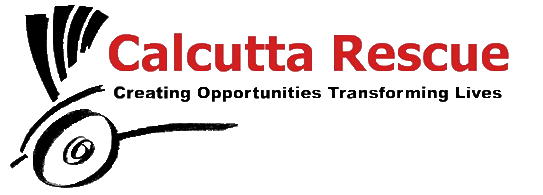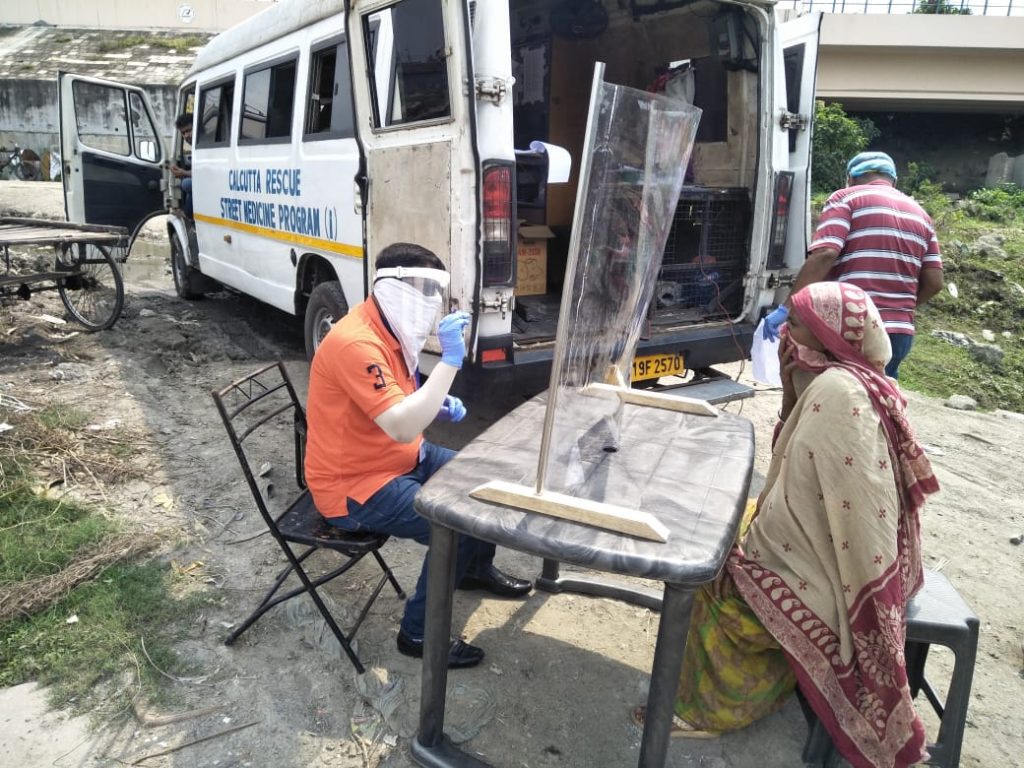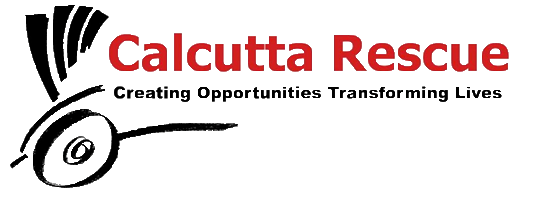
- Call us Today : +123 456 7890
- Email : [email protected]
The COVID pandemic has meant that, until now, it wasn’t safe for Calcutta Rescue’s street medicine ambulances to work in the slums.
This has made access to medical care more difficult for many people.
But the charity’s team now have the personal protective equipment they need and has developed ways of working which should keep both staff and patients safe in the challenging conditions that exist in slum areas.
So in the past few weeks the two street medicine teams have started visiting slums again to do family health screenings and allow people who need medical care to see a doctor.
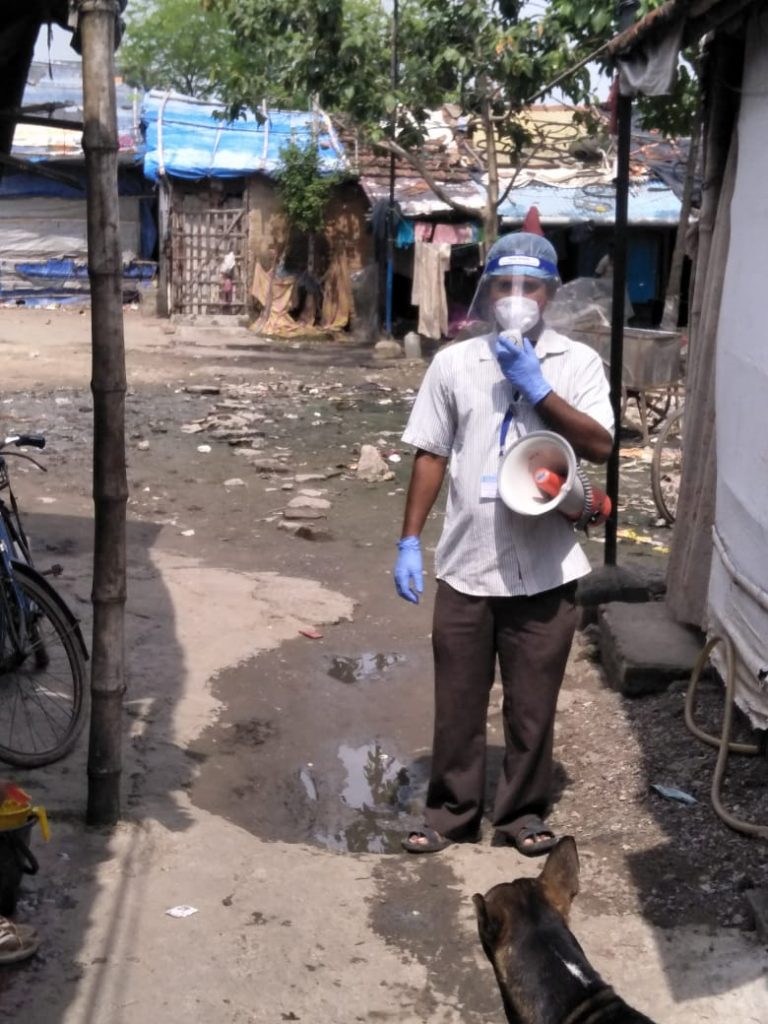
Debu, who is in charge of the project said: “Covid is not leaving us anytime soon. We don’t know when we will get vaccines. But those poorest of poor people who need immediate medical care will be deprived of necessary facilities if we don’t help them now. So with this thought in mind, we have decided to start the Street Medicine program again but with ultimate precautions, terms and conditions.”
To start with the program is running two days a week in two slums, Dakshineswar and Pahapur, which both have high levels of need and the space required to work safely.
After each visit the ambulances are thoroughly sanitised. After the system has been trialled in these two slums the aim is to roll it out to other areas.
Screening Visits
Here is how they work:
- Family screening staff are taken to the slums every Saturday by street ambulance (First and Third Saturdays for 2nd SM at Paharpur, Second and Fourth Saturdays for 1st SM at Dakhineswar ).
- The vehicle is parked in an open area which has been chosen to provide the space the team needs. A designated health worker wearing PPE and maintaining a distance of at least 6 feet from residents then announces the arrival of the team using a meagaphone.
- He makes clear that any adult who has a fever (which could be Covid) will be immediately sent to the fever clinic at local hospital and will not be allowed to approach the screening point. T
- A member of staff wearing PPE then stands in front of the screening point and sprays liquid sanitizer on the hands of the patients.
- Other health workers wearing PPE, sit in the back side of the vehicle or outside behind a table which has a thick transparent plastic shield down the middle creating a barrier between them and the patients.
- Health education advice is also given through this plastic shield.
- The team will screen no more than 20 patients per visit and those who it is decided need to see a CR doctor will be given a token allowing them to do this a few days later when the team return.
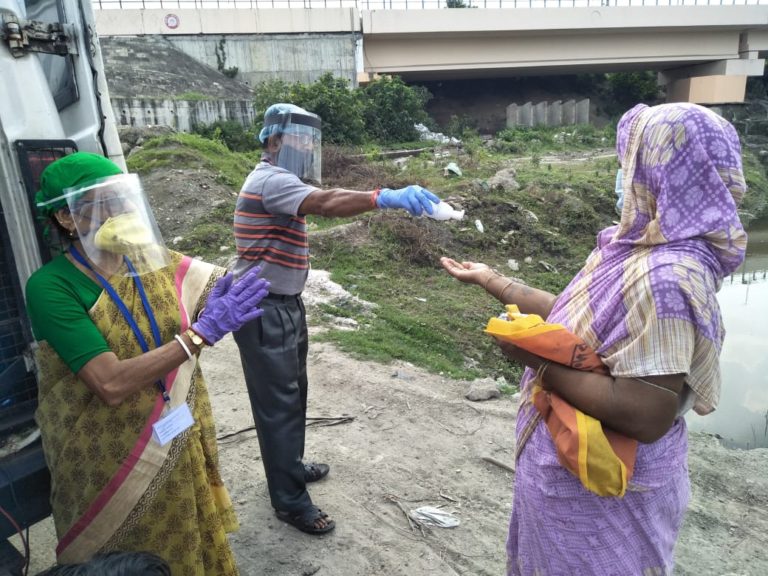
Doctor’s visits
Here is how they work:
- After the team arrives at the slum in a street ambulance, health workers, wearing PPE, find patients who need to see a doctor and who have been given a token token during the screening visit.
- Wearing masks the patients sit in a chair at least 6 feet away from the ambulance for their consultation.
- A health worker then explains to the doctor what was identified during the screening visit and shows them the investigation report where necessary.
- The doctor will be in the ambulance or behind the table with the plastic screen, along with an interpreter.
- After patients have spoken to the doctor they will be issued with any drugs they need at the pharmacy table.
- All children (below 12 years) are given Vitamin A, and albendazole or P.P. as appropriate, which are taken orally.
“We also want to start immunization.” Debu said, ” Also we have plans to start blood tests for patients (with diabetes etc). But first, let us see how this goes on and then we will decide what more we can do in future.”
